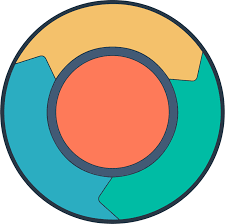What is web analytics and the best tools to do it

Why Conduct Web Analytics
What can’t be measured cannot be improved. This is the key reason for conducting web analytics: to measure for optimization.
It’s important to understand that strategies, in general, serve as a roadmap to achieve the objectives set from the start.
Digital marketing strategies operate similarly to traditional marketing strategies. They are designed for the long term and are cyclical in nature.
Constant data analysis is essential to identify what’s missing, what’s excessive, and whether alternative approaches are needed. Continuously developing content is crucial, especially after determining whether your initial designs truly meet your customers’ needs. If not, you might need to consider incorporating other tools into your digital marketing strategy.

To consistently achieve better results, it’s crucial to measure and optimize.
Always remember that the goals of your strategy are paramount as they guide the selection and modification of techniques and tools, keeping your desired outcome in focus.
There are three ways to optimize the sales process:
- Monitoring and adjustments using tools.
- Implementing surveys throughout the process.
- Engaging with prospects and consumers.
In this section, we’ll discuss the tools you can use for the first method, ‘monitoring and adjustments using tools,’ to conduct web analytics.
For any business, the effectiveness of its website is critical—it should continually attract more prospects who can then be converted into customers.
This is where web analytics becomes essential, as it helps you understand what people do when they visit your site.
Google Analytics
Google Analytics is one of the most widely used tools, owing to its affiliation with Google and its free access. All you need is a Gmail account to install a code on your website, and Google will immediately start analyzing the necessary data to understand what’s happening on your site.

Google Analytics is complex in that it provides both general and specific data. However, despite being a freely accessible tool, it is not particularly user-friendly or easy to handle, as it requires manual cross-referencing of the provided data.
Google Analytics informs you about how people arrived at your page (whether through social media advertising, search engines, etc.), the countries they are visiting from, which tabs or other pages they viewed on your site, duration of stay, and interaction with images or information.
One limitation of this tool is that while it can give you hundreds of details about ‘what people do’ on your page, it doesn’t reveal ‘how they do it on your page.’ Therefore, it’s crucial to choose other tools that can provide these additional consumer behavior variables.
Hotjar
Hotjar offers insights not just on what people do but also how they do it, providing information through heatmaps, click maps, scroll maps, and session recordings.
You can find similar features in other tools like CrazyEgg and Mixpanel.

“As you can see in this image, heatmaps show where visitors interact the most, and they also display the percentage of where clicks occur more frequently.
This is useful for web designers to understand what attracts visitors the most, allowing them to enhance the page by strategically placing important elements for better interaction, thus optimizing the design.
Scroll maps are utilized to determine if people are actually progressing through the content or if they tend to stop at certain points. This can help you analyze what needs improvement in that area.
The most intriguing feature of this tool is the session recording option. It allows you to record everything a visitor does on your page. You can observe sessions that last just a few seconds or find that some visitors may stay for an hour.
Google Search Console
This tool requires the same access as other Google platforms and is also free to use. However, it’s necessary to have a website, as it doesn’t apply to social media or other platforms.
The platform inserts a code into your website, enabling you to track the organic performance of the site. This means it provides information on the visits you receive directly through this search engine and not from advertising uploaded to platforms.

The Google Search Console allows you to understand which keywords or search terms people use to find your page, their cities or countries of origin, how often your page appears as an option in these searches, its ranking in the search engine results, and the number of clicks required for people to reach your page, among other details.
Google Search Console serves as a complementary alternative to Google Analytics. It enables you to merge certain data about organic growth that Google Analytics does not provide in detail.
In conclusion, web analytics and its associated tools are indispensable in the digital era for any business seeking to optimize its online presence. Tools like Google Analytics and Google Search Console, along with others like Hotjar and CrazyEgg, provide invaluable insights into user behavior, traffic sources, engagement levels, and content effectiveness. These tools not only help in understanding how users interact with a website but also guide in making data-driven decisions to enhance user experience, improve website design, and refine content strategy. By leveraging the detailed analytics these tools offer, businesses can identify trends, track performance, and adapt strategies for maximum impact, ultimately leading to increased customer engagement and conversion rates. Web analytics, therefore, is not just about collecting data; it’s about interpreting it to build stronger, more effective, and user-centric online platforms.
Juan Esteban Yepes
